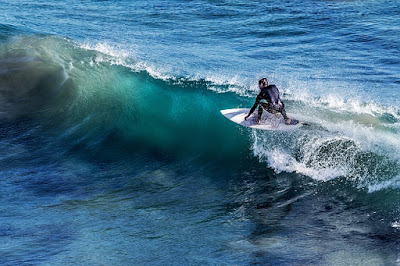The cabability to predict swell demands detailed scientific data and a great deal of area familiarity with waves and surf breaks. Open ocean storms generate swells and weather forecasting tools and buoys register this energy. It is up to the surf forecaster to create models for the waves, map out how significantly the waves will weaken, and then ascertain sizing and quality for a distinct surf spot at a certain moment in the future.
To begin, the wind is vital in generating waves for surfing. High pressure is characterized by lighter, warmer air packages and low pressure systems are characterized by more dense, colder air. Air in a high pressure system is drawn to low pressure systems generating the wind. Low pressure will strengthen when it collides with a warm air mass making air spin faster producing more wind flow. Surf are produced by wind blowing over the top of the water.
Wind first makes little swell however the more wind flow over a bigger distance leads to larger swell to form. The biggest contributing factors to swell size and period are wind speed and fetch where fetch is considered the length there is wind blowing. The larger a wave increases, the more surface the blowing wind has to grip the swell and add energy into it which makes it larger. The one thing protecting against swells from rising beyond a certain point is whitecapping which decreases the surf's size and power.
As swells spread out from the weather event, they begin to distribute and cluster themselves together. Surf of common sizes and period group into sets of waves and propagate collectively in the ocean. Next the swell will weaken while it moves great distances throughout the ocean. The nearer you are to a significant swell producing occurrence, the more substantial the swell you will witness when it meets land. As the surf go far distances, you will see a swell will clean up as waves propagate away from each other and are not all stacked on top of one another.
Overall surf sizing is determined by means of a couple key aspects, wave amplitude and the period of the wave. Swell amplitude is apparent as a swell could be 3 feet high in the open water. The period is the time it takes to go from trough to top to trough of a wave and is assessed in seconds. The higher the period of the wave, the faster the swell will propagate plus the more deep water energy the swell has too.
You'll overhear surfers make reference to a long period wave of about 12-14 seconds or greater as a ground swell and short period swells as wind swell. Groundswells with higher periods will produce a larger wave than a wave which has a equivalent amplitude but with a short period.
Waves break when they encounter shallow water and the bottom of the wave slows enough that the peak of the swell topples onward sliding over the base of the swell. The more swiftly the bottom transitions from deep to shallow, the quicker and more forcefully the surf will break. Bathymetry of the sea bottom identifies set ups that affect the depth of the water such as sandbars, points, and shelves and ocean bottom contour impacts how a wave breaks for a specific surf spot.
To figure out the surfing forecast, complicated data is gathered from organizations like the National Weather Service. Models are developed that look at wind speed and direction as well as fetch to discover swell amplitude, period, and the swell route leaving a weather event.
These kinds of models will approximate how a wave will propagate throughout the ocean to create a surf forecast. Then local individuals from surfing report services will venture out to surf spots early in the day to capture the surf report looking at surf amplitude, shape, and quality.

EmoticonEmoticon